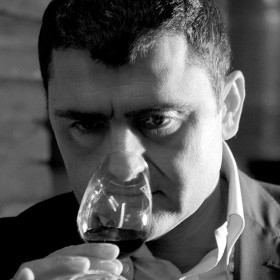

Having obtained the correct ripening of the grapes, the second segment of the qualitative pipeline is represented by oenology, which must interpret and enhance the work achieved in the vineyard.
Oenological technique must succeed in extracting the qualitative elements of the grapes in such a way as to produce a harmonious wine, whatever the typology of wine one intends to produce.
Achieving harmony among the various components of a wine is most important because harmonious wines please the consumer and can therefore be successful on the market.
The role of the winemaker is to achieve the maximum expression of a given territory in its wines while at the same time take into account the increasingly complex requirements of the market.
In the end, wine is made to be drunk and at that very moment provide the consumer with the greatest possible pleasure.

The role of the winemaker is to achieve the maximum expression of a given territory in its wines while at the same time take into account the increasingly complex requirements of the market.
In the end, wine is made to be drunk and at that very moment provide the consumer with the greatest possible pleasure.



